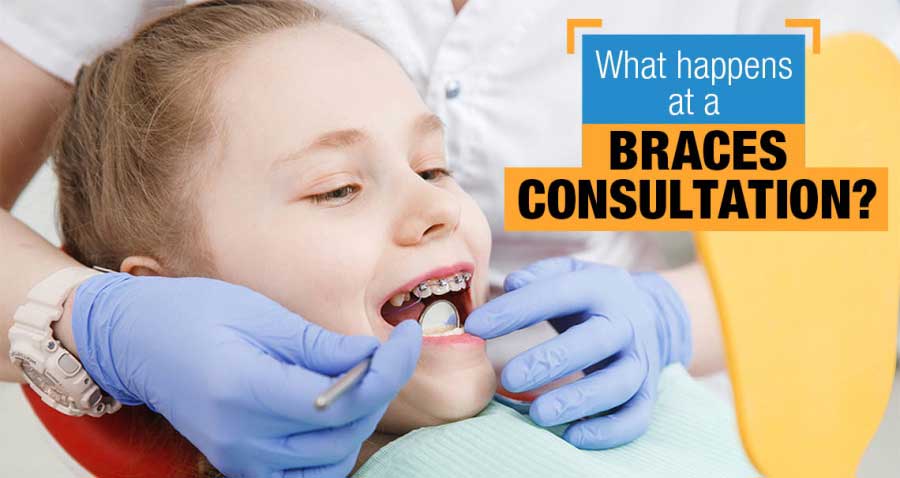Comprehensive Overview to Orthodontics Treatments for Fixing Oral Imbalances
Comprehending the ins and outs of each treatment, including their mechanisms, benefits, and potential drawbacks, is essential in making informed decisions about one's orthodontic treatment. As we navigate through the comprehensive guide to orthodontic treatments for remedying oral misalignments, the intricate information of each approach will certainly unfold, shedding light on the path toward a useful and unified dental alignment.
Orthodontic Procedures Introduction

Along with clear aligners and traditional braces, orthodontists might likewise advise other treatments like headgear, palatal expanders, or retainers to address certain alignment problems (orthodontist). These treatments are customized to every patient's special needs and may entail a combination of treatments to accomplish the preferred outcomes. Regular modifications and tracking are essential components of orthodontic therapy to make sure progression is on track and to make any kind of necessary adjustments along the means. By undergoing orthodontic procedures, individuals can not just achieve a straighter smile however additionally boost their overall dental wellness and feature.
Typical Dental Braces: Exactly How They Work
When taking into consideration orthodontic therapies for oral misalignments, conventional dental braces attract attention as a reliable technique for dealing with teeth placing. Traditional dental braces consist of braces, cables, and bands that collaborate to use constant stress on the teeth, slowly moving them right into the desired alignment. The brackets are affixed to the teeth utilizing an unique adhesive, and the cables are threaded via the braces. By changing the stress of the cables, orthodontists can regulate the direction and pressure related to each tooth, assisting them right into correct positioning over time.
One trick aspect of how standard dental braces work is the process of bone makeover. As pressure is put on the teeth with the braces, the bone bordering the teeth is reshaped to support the new tooth settings. This makeover is important for the long-term stability of the dealt with alignment. Patients will need routine changes at the orthodontist's workplace to ensure the braces remain to apply the right stress for effective teeth motion.
Unseen Aligners: Cons and pros
Undetectable aligners use a very discreet and practical alternative to standard dental braces for remedying dental misalignments. These clear, customized trays are practically unnoticeable when worn, making them an enticing choice for individuals looking for a more visually pleasing orthodontic treatment. Among the primary benefits of unseen aligners is their removability, enabling for less complicated upkeep of oral hygiene compared to traditional dental braces. Individuals can eliminate the aligners before consuming or cleaning their teeth, reducing the threat of food obtaining stuck in the device and streamlining the cleaning procedure.

Surgical Orthodontic Options
Surgical i was reading this interventions in orthodontics existing sensible alternatives for addressing complex dental imbalances that might not be effectively settled with conventional orthodontic treatments. While typical dental braces and invisible aligners can deal with several orthodontic concerns, certain cases require medical treatment to accomplish ideal results. Surgical orthodontic options are generally recommended for severe malocclusions, significant jaw disparities, and instances where the underlying bone framework needs modification to attain correct alignment.
One common medical orthodontic procedure is orthognathic surgery, which involves rearranging the jaws to fix functional concerns such as trouble eating or speaking. This surgery is often executed in partnership with an orthodontist who helps straighten the teeth before and after the treatment. Surgical orthodontics may also include procedures to reveal affected teeth, remove excess periodontal tissue, or improve the jawbone to produce a more harmonious face account.
Before taking into consideration surgical orthodontic alternatives, patients undergo a comprehensive assessment to establish the need and possible advantages of such interventions. cumming orthodontics. While surgical treatment might seem daunting, it can substantially boost both the function and appearances of the smile in situations where standard orthodontic treatments fall short
Retainers and Post-Treatment Treatment

Post-treatment care includes adhering to the orthodontist's directions faithfully. This may consist of correct dental health practices, going to follow-up appointments, and using the retainers as recommended. Failing to abide by post-treatment treatment instructions can result in relapse, where the teeth slowly return in the direction of their original positions. Constant retainer wear, great oral hygiene, and routine oral examinations are essential for keeping the outcomes attained via orthodontic surgery and guaranteeing the long-term stability of the fixed dental positioning.
Verdict
In verdict, orthodontic treatments provide various options for correcting oral imbalances. Conventional braces utilize metal brackets and cords to move teeth into correct positioning. Unnoticeable aligners provide a more discreet choice however may not be ideal for all situations. Surgical orthodontic options are readily available for navigate to this website a lot more severe misalignments. Retainers are commonly made use of post-treatment to maintain the brand-new positioning. Overall, orthodontic treatments can efficiently boost dental health and visual appearance.
As we navigate via the extensive overview to orthodontic procedures for remedying oral misalignments, the complex information of each method will certainly unfold, dropping light on the course toward a unified and functional oral alignment. - cumming braces
One of the most common orthodontic treatments is the usage of dental braces, which are composed of metal brackets and cables that use mild pressure to gradually move teeth right into the wanted placement.When considering orthodontic therapies for oral misalignments, conventional braces stand out as a tried and true approach for correcting teeth positioning. Additionally, undetectable aligners may not be ideal for complicated orthodontic issues that require more significant teeth movement, as they are typically recommended for moderate to moderate situations. Retainers are tailor-made orthodontic devices designed to hold teeth in their fixed positions after the completion of orthodontic treatment.